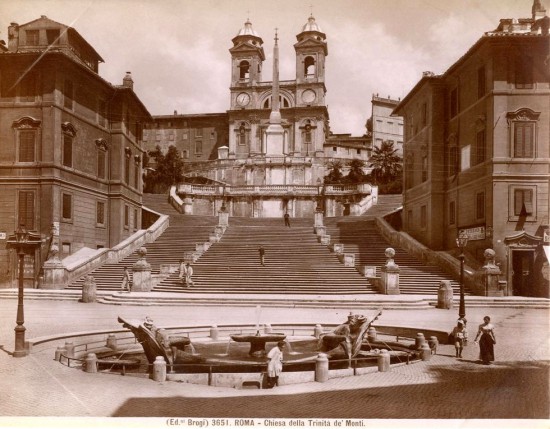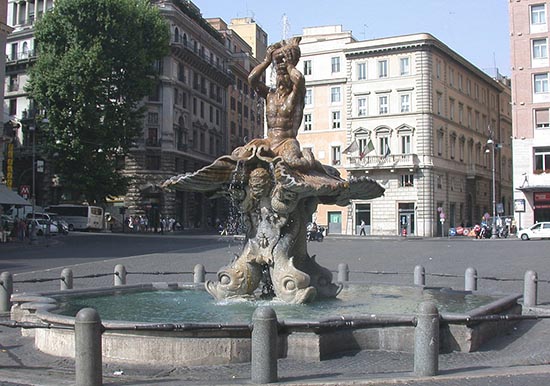It is mainly due to the artistic heritage of the classical age that Rome is known worldwide. Who has not heard of the Colosseum or the Roman Forum or the Pantheon or Trajan’s Column? The eternal city, full of charm and culture, has a layered history, a precious chest of memories that allows any visitor to take a trip back in time. Visiting Rome is a bit like a stroll through different historical eras, all spread out in a unique urban space.
A particularly interesting route is the one related to the Baroque period. The term “Baroque” refers to a phase of European architecture, which developed during the seventeenth century, following the Renaissance. Compared to the regularity and the harmony that characterized the previous age, the baroque style is strongly characterized by the presence of curved lines, irregular patterns, spirals, and ornamental motifs that fill nearly every space that architecture offers. This arouses feelings of wonder and surprise in the heart of the observer, as if what is observed were a stage wing dominated by light and shadow. Hence, that Rome, under the impulse of patron popes, expresses during the course of the century an intense decorative activity of urban spaces, of which fountains and squares represent beautifully some of the constructive aspects related to this style.
Here are a few suggestions of true masterpieces to admire in this style within the city of Rome.

La Barcaccia. This characteristic fountain set in Piazza di Spagna, just in front of the Spanish Steps, was designed by Pietro Bernini, father of the famous Gian Lorenzo. The client was the patron Pope Urbano VIII, as testified by the two coat of arms positioned outside, depicting a tiara and bees, which are part of the iconography of the papal family heraldry. The inspiration for the creation of this fountain, completed in 1629, may have been a particular episode that affected Rome in 1598, when due to a flood of the river Tiber, a boat appeared aground in the centre of the square. From here, according to legend, comes the name “barcaccia”, which means ‘a poor boat’.
Piazza Navona’s fountains. The realization of the fountains located in one of Rome’s most famous squares, Piazza Navona, is tied to the name of Pope Innocenzo X Pamphilj. Here we find, beside the obelisk of the Circus of Maxentius, a marble statuary complex, designed by Bernini, which intended arousing amazement and admiration for its magnificence. These statues represent the four major rivers of the world: the Ganges, the Nile, the Danube and the Rio de la Plata and they are creations of four different sculptors. It is a monument of strong symbolical meaning, of which the key elements are: the number four as an expression of the perfection of God’s creation, the dove, the egg-shaped morphology of the a plan on the fountain, which refers to Zoroastrianism. In piazza Navona there is also another fountain, built in 1574 and known as the Fontana del Moro. It was projected by Giacomo Della Porta and it represents a triton that firmly holds a dolphin. The fountain was built in the sixteenth century by Giovanni Antonio Mari.

Bernini, Fontana del Tritone.
Fontana del Tritone. Among the most famous fountains of Rome is the Triton Fountain, designed by Bernini in 1643. Carved in travertine, displaying ornamental motifs related to the maritime dimension as the one of the dolphin, the shell and the triton. The final result is of great perceptive impact with the triton crouching in the shell in the act of vigorously blowing. Absolutely not to be missed.
Fontana di Trevi. Who does not know of this fountain? Who has not been to Rome without having launched at least once in its waters a dime and expressed a wish? It is the most famous and spectacular Roman fountain, a symbol of the magnificence of the late Roman Baroque style, designed by Nicola Salvi and inaugurated in 1735. Many sculptors collaborated to its realization, which extends itself thorough a quite a discreet amount of time. The main theme of the entire complex is the sea, while the structure that dominates is a rocky cliff, at the centre of which is placed a niche or exedra with the statue of Oceanus riding a chariot in the shape of a shell and driven by tritons. Two other recesses house the statues of Salubrity and Abundance. The water confers life to a scenographic and astonishing structure, full of columns and details, statues and ornamental motifs that crowd the rocky cliff. All these elements make this fountain one of the most visited monuments in the world.


